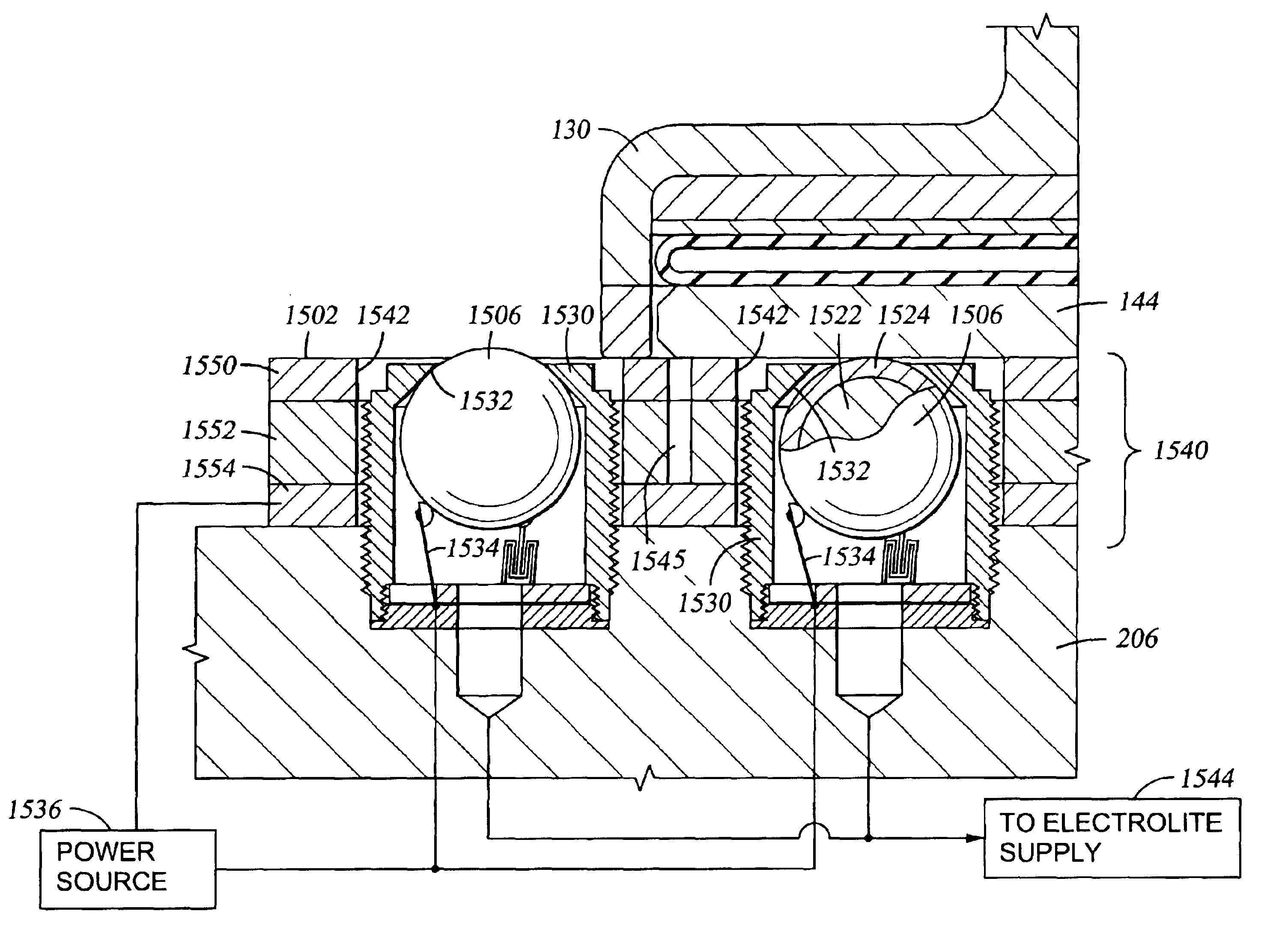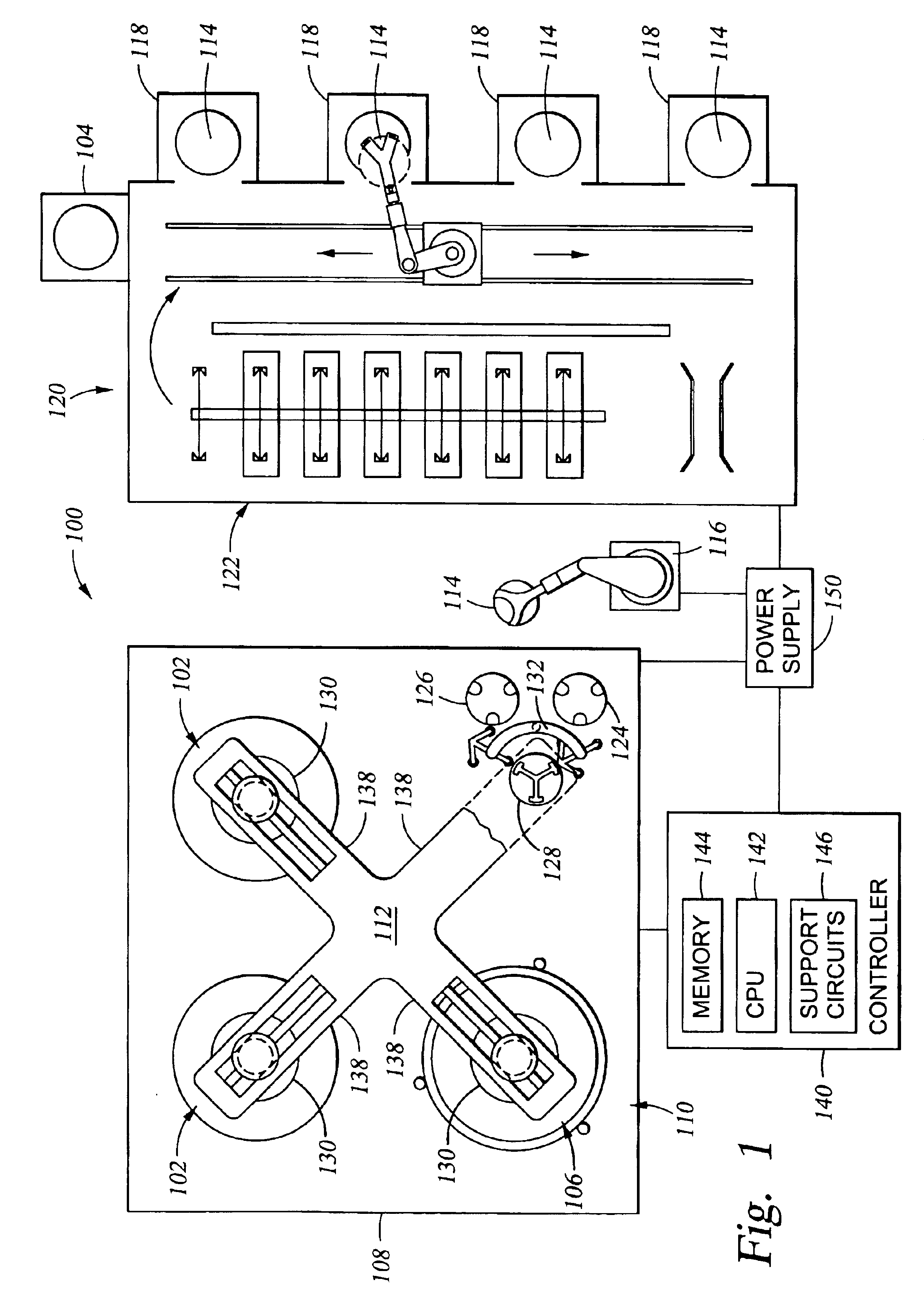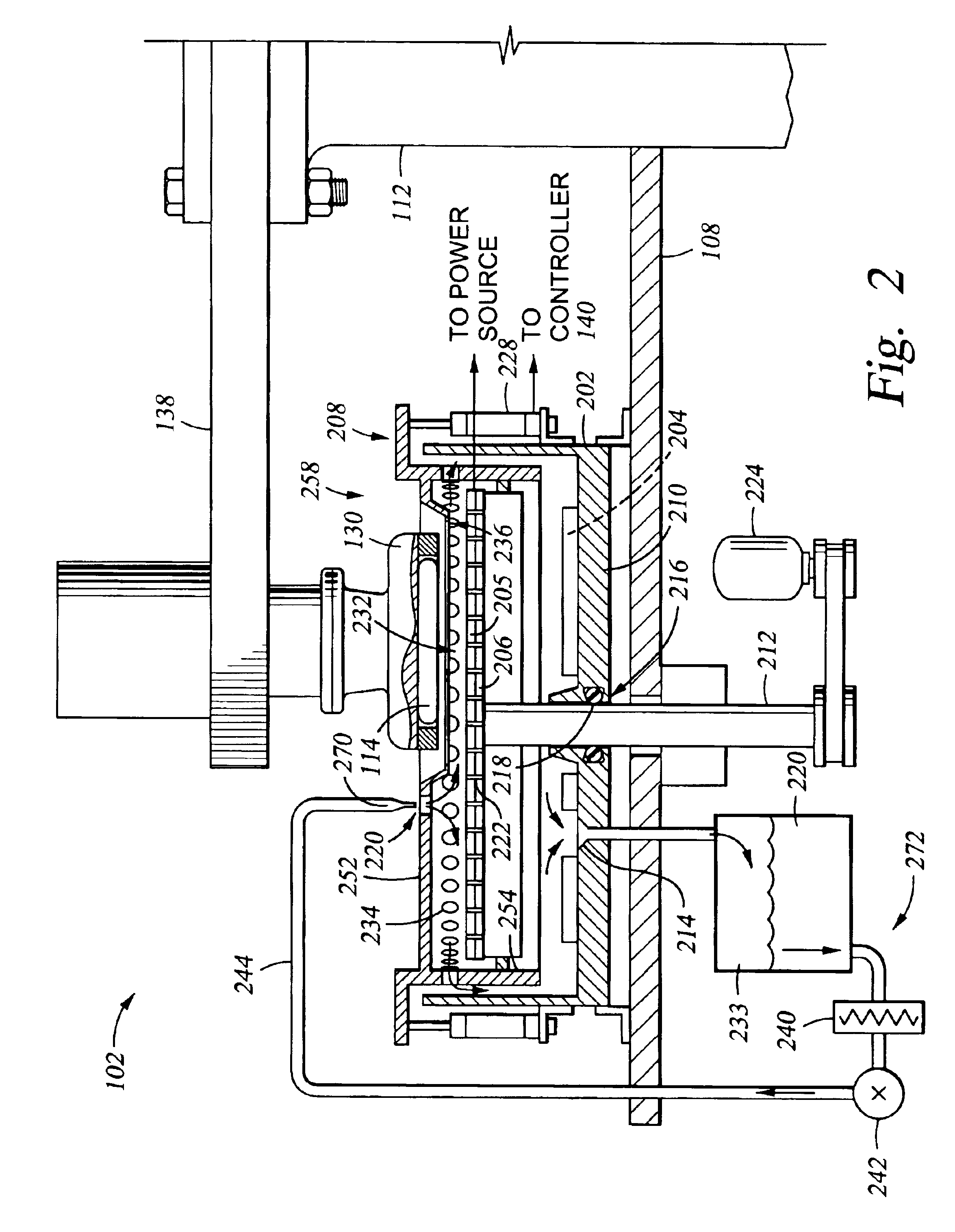Conductive polishing article for electrochemical mechanical polishing
a technology of electrochemical mechanical polishing and polishing article, which is applied in the direction of manufacturing tools, lapping machines, abrasive surface conditioning devices, etc., can solve the problems of non-interface between the conductive material and the barrier layer, copper has its own special fabrication problems, and excess copper material, etc., to facilitate material flow and facilitate material flow.
- Summary
- Abstract
- Description
- Claims
- Application Information
AI Technical Summary
Benefits of technology
Problems solved by technology
Method used
Image
Examples
Embodiment Construction
[0060]The words and phrases used herein should be given their ordinary and customary meaning in the art by one skilled in the art unless otherwise further defined. Chemical-mechanical polishing should be broadly construed and includes, but is not limited to, abrading a substrate surface by chemical activity, mechanical activity, or a combination of both chemical and mechanical activity. Electropolishing should be broadly construed and includes, but is not limited to, planarizing a substrate by the application of electrochemical activity, such as by anodic dissolution.
[0061]Electrochemical mechanical polishing (ECMP) should be broadly construed and includes, but is not limited to, planarizing a substrate by the application of electrochemical activity, chemical activity, mechanical activity, or a combination of electrochemical, chemical, and mechanical activity to remove material from a substrate surface.
[0062]Electrochemical mechanical plating process (ECMPP) should be broadly constr...
PUM
| Property | Measurement | Unit |
|---|---|---|
| Electrical conductor | aaaaa | aaaaa |
| Surface area | aaaaa | aaaaa |
| Hardness | aaaaa | aaaaa |
Abstract
Description
Claims
Application Information
 Login to View More
Login to View More - R&D
- Intellectual Property
- Life Sciences
- Materials
- Tech Scout
- Unparalleled Data Quality
- Higher Quality Content
- 60% Fewer Hallucinations
Browse by: Latest US Patents, China's latest patents, Technical Efficacy Thesaurus, Application Domain, Technology Topic, Popular Technical Reports.
© 2025 PatSnap. All rights reserved.Legal|Privacy policy|Modern Slavery Act Transparency Statement|Sitemap|About US| Contact US: help@patsnap.com



